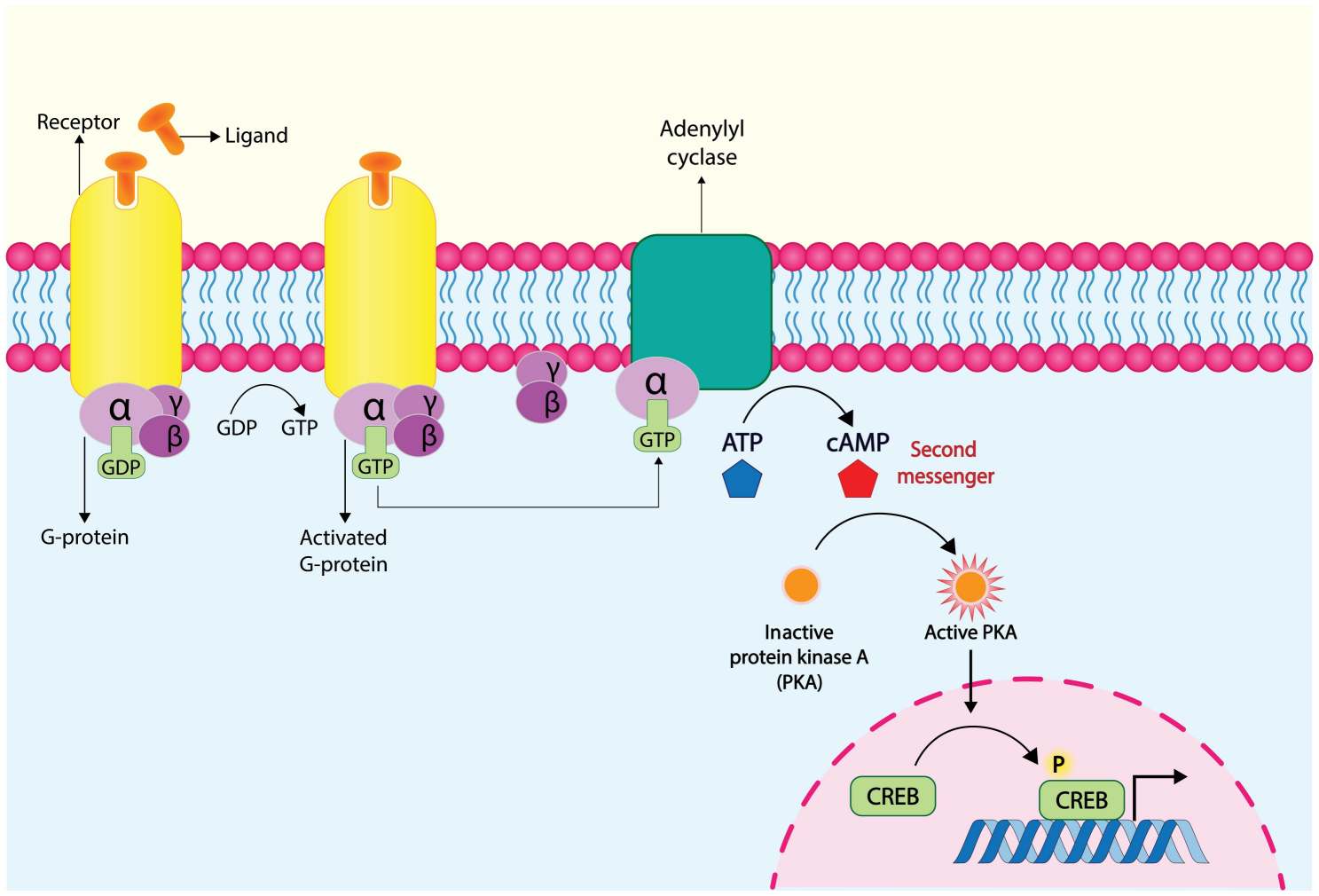GPCR Screening Services
INQUIRYBOC Sciences has established a systematic GPCR screening technology platform that integrates cutting-edge technologies such as high-throughput screening (HTS), high-content analysis (HCA), biased signaling studies, ligand-binding assays, receptor internalization tracking, and reporter gene systems. We offer comprehensive and customized GPCR screening solutions for our clients.

Service Highlights and Advantages
- Equipped with various reporter gene and detection systems covering multiple G protein subtypes (Gs, Gi/o, Gq, G12/13);
- Capable of developing stable or transiently transfected GPCR cell lines (over 150 types);
- One-stop services from primary screening to mechanism-of-action studies;
- High-throughput automated platforms supporting large-scale screening;
- Capable of detecting various molecular types including agonists, antagonists, inverse agonists, and biased ligands;
- Over 300 GPCR targets supported.
GPCR Screening Services for Targeted Drug Discovery
BOC Sciences is dedicated to providing one-stop, high-quality GPCR target screening services to global clients, covering all aspects from target expression and signal pathway analysis to lead compound screening and validation. Leveraging rich technical experience and advanced platforms, we deliver customized screening solutions for various GPCR subtypes—including classical GPCRs and orphan receptors—facilitating efficient drug discovery and mechanism-of-action research.
Target Analysis and Screening Strategy Design
At the initial stage of screening, we provide professional screening strategy design based on the client's R&D goals, target type, and compound characteristics, including:
- Literature research and signaling pathway analysis of the target;
- Selection of suitable signal detection methods;
- Evaluation of compound library characteristics and formulation of screening strategies;
- Construction of expression systems or stable cell lines.
High-Throughput Screening (HTS)
BOC Sciences' automated platform supports high-throughput screening in multiple 96/384/1536-well plate formats. Common screening modes include:
- cAMP accumulation assays (for Gs- and Gi-coupled receptors);
- Intracellular calcium flux detection (Gq-coupled);
- β-arrestin recruitment assays;
- Reporter gene activity assays (e.g., CRE-Luc, NFAT-Luc);
- BRET/FRET energy transfer analysis;
- Receptor internalization/membrane localization detection (confocal imaging or high-content analysis).
Secondary Screening and Functional Validation
For hit compounds from primary screening, we further provide:
- IC₅₀ / EC₅₀ dose-response analysis;
- Time- and dose-dependent response curve plotting;
- Drug-receptor binding kinetics (e.g., NanoBRET probe, radioligand binding analysis);
- Receptor mutant construction to analyze ligand binding modes;
- Signal pathway specificity validation using CRISPR/Cas9 knockout technology.
Receptor Expression and Cell Model Development
We offer a range of expression platform construction services, including:
- Stable transfection in mammalian cell lines (HEK293, CHO, U2OS, etc.);
- Inducible expression systems (Tet-On/Off);
- Viral vector construction and transduction;
- Tissue-specific cell models or 3D organoid platforms.
Do You Need A Consultation?
BOC Sciences integrates innovative technologies to empower your drug discovery with strong momentum, fully dedicated to building next-generation drug screening platforms.
GPCR Signal Detection Technology Platform
We have established a diversified and modular GPCR screening technology platform that integrates advanced signal detection and target validation methods to meet functional screening needs across different GPCR types and ligands. Our platform supports various detection modes, covering comprehensive monitoring from classical G protein signaling to biased signaling pathways, delivering sensitive, reliable, and scalable screening data.
| Technology Name | Detection Principle | Main Signal Detected | Advantages | Applicable Scope |
|---|---|---|---|---|
| cAMP Detection | Measures changes in intracellular cyclic adenosine monophosphate levels | cAMP concentration | High sensitivity, suitable for Gs-coupled GPCRs | Gs-coupled GPCR |
| Ca²⁺ Fluorescence Imaging | Fluorescent probes monitor changes in intracellular free calcium levels | Intracellular Ca²⁺ concentration | Real-time monitoring, dynamically reflects signal changes | Gq-coupled GPCR |
| IP1/IP3 Detection | Measures accumulation of inositol phosphate metabolites IP1 or IP3 | IP1/IP3 levels | Sensitive and quantitatively accurate | Gq-coupled GPCR |
| β-arrestin Recruitment Assay | Detects β-arrestin binding events with receptors | β-arrestin binding quantity | Suitable for biased signaling analysis, high sensitivity | Various GPCRs |
| GTPγS Binding Assay | Measures binding of non-hydrolyzable GTP analog GTPγS after receptor activation | GTPγS binding level | Directly reflects G protein activity, accurate and reliable | Various G protein-coupled GPCRs |
| Receptor Internalization Detection | Observes receptor trafficking from membrane to intracellular compartments | Degree of receptor internalization | Reflects receptor activation and regulation, supports qualitative and quantitative analysis | Various GPCRs |
| Luciferase Reporter Gene Assay | Uses luciferase activity of downstream signal-activated reporter gene products | Luminescence intensity | High-throughput, sensitive, easy quantification | Various GPCRs |
Project Workflow

Requirement Communication and Project Evaluation
After the client proposes the project requirements, our scientific consultants will engage in in-depth communication to clarify the target GPCR type, the category of molecules to be screened (e.g., agonists, antagonists, biased ligands), screening scale, and subsequent research directions.

Experimental Design and Screening Strategy Formulation
Based on the client's requirements and the characteristics of the target, we develop a personalized screening plan, including the selection of detection methods (such as cAMP, Ca²⁺, β-arrestin), cell line construction strategy, experimental control settings, and key quality control indicators to ensure high specificity and reproducibility of the experiments.

Cell Model Construction and System Validation
We can construct stable or transiently transfected cell lines according to the client's target and perform functional validation (signaling pathway response, receptor localization, etc.). If necessary, inducible expression systems or target mutations can be established. All experimental systems are verified using positive controls to ensure the stability of the screening platform.

High-Throughput Screening and Data Acquisition
Utilizing automated platforms and multimodal detection equipment, we conduct large-scale compound library screening to obtain preliminary activity data. Strict quality control is implemented during the screening process, including Z-factor evaluation, reproducibility validation, and inter-plate consistency analysis, ensuring the scientific rigor and comparability of the data.

Secondary Validation and Mechanism Analysis
Hit compounds from primary screening are subjected to dose-response validation (IC₅₀/EC₅₀), signaling pathway bias assessment, binding kinetics analysis, internalization behavior observation, etc., for comprehensive pharmacological profiling to support subsequent structure optimization and druggability evaluation.

Data Analysis and Project Report
All screening results are statistically analyzed and graphically presented by experienced scientific staff, with a standardized project report output including raw data, analysis results, screening profiles, and technical summaries. Clients can use this information to support further drug discovery decisions.
Application of GPCR Screening
Drug Development
BOC Sciences' GPCR screening services enable efficient identification and validation of potential agonists, antagonists, and biased ligands, accelerating the discovery and optimization of lead compounds. Our screening technologies cover multiple signaling pathways, supporting the development of novel therapeutics with high selectivity and low side effects, widely used in cardiovascular, neurological, metabolic, and immune-related disease drug research.
Tumor Biomarker Research
GPCRs play critical regulatory roles in tumor initiation, progression, and metastasis. Some GPCRs have been identified as potential tumor biomarkers. Through precise GPCR screening technologies, researchers can identify activity changes in tumor-related GPCRs, aiding in early diagnosis, prognosis evaluation, and development of targeted therapies.
Central Nervous System Disorders
GPCRs are central to neurotransmitter transmission and neural signal regulation, making them important targets for treating central nervous system disorders. BOC Sciences' GPCR screening services support functional identification and drug screening for disease-associated receptors related to Parkinson's disease, Alzheimer's disease, depression, etc., driving the development of novel neuroregulatory drugs.
Immune Modulation and Inflammatory Diseases
GPCRs are involved in regulating immune cell activity and inflammatory responses and are key targets for treating autoimmune and chronic inflammatory diseases. BOC Sciences' GPCR screening platform systematically evaluates the functional state of immune-related receptors and the regulatory effects of drugs, aiding in the screening of novel immunomodulators and anti-inflammatory agents.
FAQs
What types of GPCR targets are supported by BOC Sciences' GPCR screening services?
We support classical G protein-coupled receptors (such as Gs, Gi/o, Gq-coupled receptors) as well as orphan GPCRs, covering a wide range of families and subtypes to meet diverse research and drug development needs.
What detection technologies are used during screening to ensure data accuracy and diversity?
We integrate multiple signal detection techniques including cAMP assays, Ca²⁺ fluorescence imaging, β-arrestin recruitment, and GTPγS binding, combined with high-throughput automated platforms to ensure sensitive, reliable, and comprehensive screening data.
Will a detailed analysis report and technical support be provided after project completion?
Yes, we provide a standardized report that includes raw data, statistical analysis, and technical summaries. We also offer ongoing technical consultation and post-project support to facilitate the smooth progress of drug development.
What cell types are available for use in screening?
We offer a variety of cell lines including commonly used mammalian cell lines such as HEK293 and CHO, and also support the use of specific host cells based on client requirements.
What are the requirements for sample storage and transportation?
We recommend low-temperature transport (dry ice or liquid nitrogen), and samples should be processed promptly upon arrival to ensure the activity and stability of targets and compounds. Detailed requirements will be provided based on sample type.
How long does a typical GPCR screening project take to complete?
The project duration depends on the screening scale and complexity. The basic screening stage generally takes about 4–6 weeks, while complex customized screening or multi-round validation may require 8–12 weeks.
Online Inquiry

